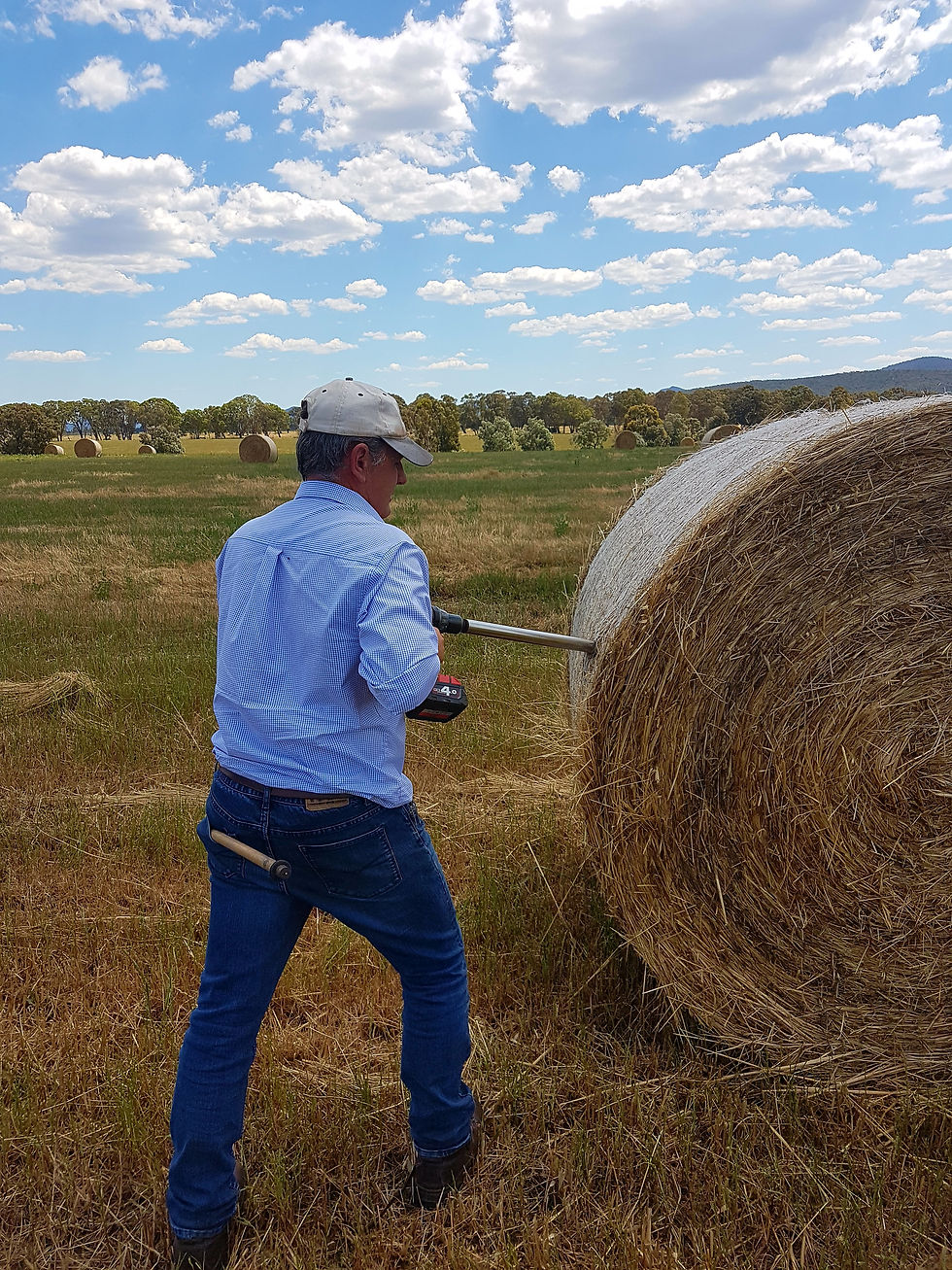GETTING THE BEST OUT OF PASTURES & CROPS
- Rebecca Thorn

- Jun 15, 2021
- 4 min read

With the sun out and many areas having an early Autumn break plant growth rates are the highest they have been for years. Plants are growing a lot of lush green vegetation for the animals to eat off. The question is, Will this lush grass/ crop be a balanced ration for my animals?
We know that sheep are ruminant animals with 4 stomachs designed to digest pretty crappy dry feed into nutrients the animal can live off. What happens to this digestive system when we have fast growing, low dry matter, high protein very degradable, forage? Let’s have a look at a few attributes of this forage and how it will affect the performance of your animals.
Digestibility
This is a term that reflects the forages ability to be digested by the ruminant animal. The higher the digestibility the quicker it breaks down in the rumen. Normally we would say that the quicker food stuffs break down the better it would be for the animals, but in some cases the food breaks down so fast, the food has left the animal as manure before the rumen bugs have had a chance to extract all the nutrition out of it.
Fast-Growing
When the plants are fast-growing the amount of structural fibre they have is low. E.g. a piece of fresh green grass leaf has very little fibre in it when compared to a bit of cereal straw after harvest. As plant matter matures the amount of neutral detergent fibre, NDF increases and with that the amount of time the animals have to spend breaking down the fibre before they can digest it. This can also be said about the fibre that the animals can’t digest, the more mature a plant gets the higher the indigestible proportion is.
Low Dry Matter
During the wetter winter months the plants suck up more moisture and a larger percent of the plant is water. Animal requirements are expressed as dry matter, meaning when the plants have high amounts of water in them then the animals must eat more fresh weight grass to receive enough nutrients. In some cases the amount of water they ingest will have a negative effect on the amount they can physically eat due to the water taking up room in the rumen.
High Protein
Plants access their protein from the soil in the form of nitrates. In the winter, the plants ability to extract more nitrogen from the ground is increased due to moisture in the soil increasing the microbial activity for the nitrogen cycle. Applying nitrogen based fertiliser e.g. Urea, Sulphate of Ammonia or blends result in the plant sucking up more nitrogen, that is converted into protein by the plant.
These levels can quite quickly get to the excessive point with reading higher than 30% crude protein (CP) when the animals requirements are under 18% CP. This then poses an issue to the animal as this excessive amount of protein can be toxic. To help cleanse itself the animals use a large amount of energy transforming the excessive protein (ammonia) into urea which can then be excreted in the urine. This process uses up energy that could have been used for weight gain and or production of milk or wool.
Ok, so now we have an understanding of the attributes of pasture and crop species current growth stage, how can we utilise it better.
We can slow the rate of passage through the rumen down by adding some slow fermenting feeds like hay and straw. These feeds will provide the animal with structural fibre that will float in the rumen and form a raft that will trap fast fermenting food stuffs in the rumen longer, allowing the bugs more time to access the energy and protein. In the deep dark coldness of winter, feeding small amounts of fibre can also help the animal feel warmer. You see when a ruminant animal digests fibre it takes a lot of bug activity to break the fibre down into simple sugars the bugs can use. All these bugs create heat when they are digesting the fibre, so a little fibre can help the animal create more warmth for itself.
Feeding free choice stock salt will help the animals with osmotic balance. This means all the extra water that the animals are ingesting can easily move out of the body to create balance. Salt and particularly sodium help the animal at cellular levels to transport energy, amino acids and minerals such as calcium, phosphate and potassium. It can also help more efficient utilisation of protein and energy. Animals have no ability to store sodium, so it needs to be consumed by the animal daily.
We can’t change the grass and the protein load that our animals have to eat, but we can help the animals balance the energy and protein. By feeding a concentrated source of energy e.g. cereal grains, we replenish the animal’s energy reserves that are being used to excrete the excessive protein in many pastures and crops.
Whilst these are a few pointers on helping your sheep get the best out of fast-growing pasture this season. A more targeted approach may be needed on a farm by farm basis. Talk to one of our consulting nutritionists to get a specialised program for your animals.
Our Consultants
EXPERTS IN RUMINANT PRODUCTIVITY
Mark Facy
0427 243 320
Owen Rees
0429 437 823
Mikaela Baker
0457 243 319
To download a copy of this article, please click the link below...




Comments